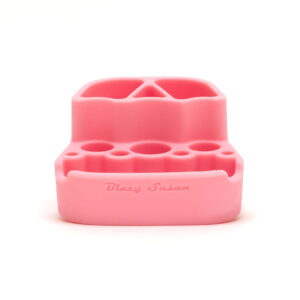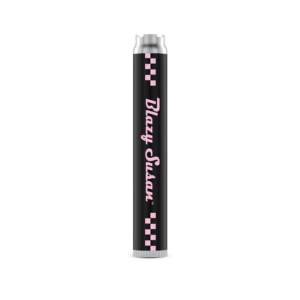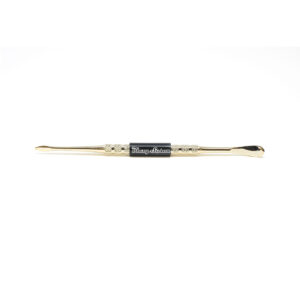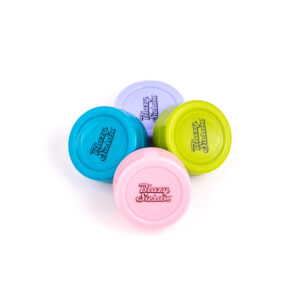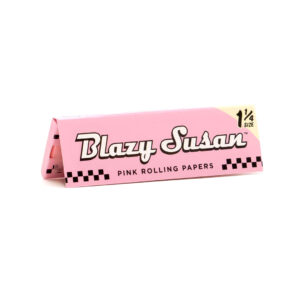
Here are Blazy, we make dabbing accessories for dabbers by dabbers. Yet, if you are used to smoking your flower, you may not even know what that means. Dabs are herbal concentrates that you heat up and inhale the vapors. We wrote a great introduction to dabbing piece called Dabbing 101. We highly recommend reading it if you never have heard of dabbing. For this blog, we are going to focus on the history of dabbing, from the origins to how it became so popular today.
Early Forms of Herbal Concentrates
Though dabbing has only recently become really a trend in the last few decades or so, originally dabs can trace their origins thousands of years ago to hashish, which is a form of herbal trichomes that have been extracted and compressed. Trichomes are the resin glands on cannabis or hemp flower buds, stems, and leaves. They’re rich in cannabinoids, terpenes, flavonoids, and other healing chemicals. These have been used for thousands of years by cultures all over East and Southeast Asia for medical and religious purposes.
20th Century Research
Though the basis for dabbing has been around for thousands of years, it was just over hundred years ago that cannabinoid isolates were first produced, by a Chemist, Rodger Adams. He achieved synthesizing a THC analog via the manipulation of CBD molecules. Stanley P. Lovell considered to be the scientist who generated the first THC concentrate outside of hash oil. The different between what Stanley P. Lovell created vs. what Rodgers created was the fact Lovell’s was organic, not synthesized. Dr. Raphael Mechoulam in 1964 discovered the process of THC isolation. He has played a pivotal role in mainstreaming and professionalizing cannabis as a viable medical application.
The Brotherhood of Eternal Love
On October 3, 1973, the United States Senate Committee on the Judiciary held a rather unique hearing entitled Hashish Smuggling and Passport Control: The Brotherhood of Eternal Love. The Brotherhood of Eternal Love was smuggling organization in the 70’s targeted by the US government. They were known also as the Hippie Mafia and were network of cannabis smugglers and LSD evangelists. The Brotherhood of Eternal Love’s chief chemist, Ronald Stark, is credited by the DEA as the inventor of butane hash oil and modern cannabis concentrates. The Truth of who he is though is not as clear cut as it seems. Many believe Stark was not who he said her was. Some had him as an undercover CIA asset sent to subvert the counterculture, others a rogue KGB operative, a career criminal disguised as a hippie, and a cunning snitch who transformed the Brotherhood of Eternal Love from idealistic hippies into international drug smugglers and so on. The group though shut down operations after an explosion at their manufacturing facility.
Concentrates in Publications
As the general public began to become aware of this new cannabis concentrate, publications began to describe its existence and production processes. D. Gold’s Cannabis Alchemy: The Art of Modern Hash Making, was published in 1973. Michael Stark (no relation) added his own iteration to the process in 1977 with the book Marijuana Chemistry: Genetics Processing and Potency. Stark expanded the process with other solvents other than alcohol: chloroform, ethanol, petroleum ether, isopropanol, and more. Stark’s recipe expanded the possible range of THC content by the introduction of stronger solvents to the refinement process.
Modern Concentrates.
In 1999, when Erowid, a popular science website dedicated to providing information about psychoactive plants and chemicals, published “Hash Honey Oil Technique,” which described to the public for the first time the contemporary open-blasting extraction process. Open-blasting hydrocarbons like propane and butane led to the more refined and advanced closed-loop extraction system, in which the solvent is captured and recycled. Blending gases like butane and propane was found to improve the extraction process by keeping pressures low and boosting output, so soon producers learned that combining them could increase efficiency. The concentrate produced as a result of this process has more of the plant’s cannabinoids and terpenes, resulting in a more flavorful and potent experience.
As concentrates become more popular, a variety of methods are being used to produce them. Here at Blazy, we will continue to produce premium dabbing accessories so you can take your dabbing sesh to the next level.




